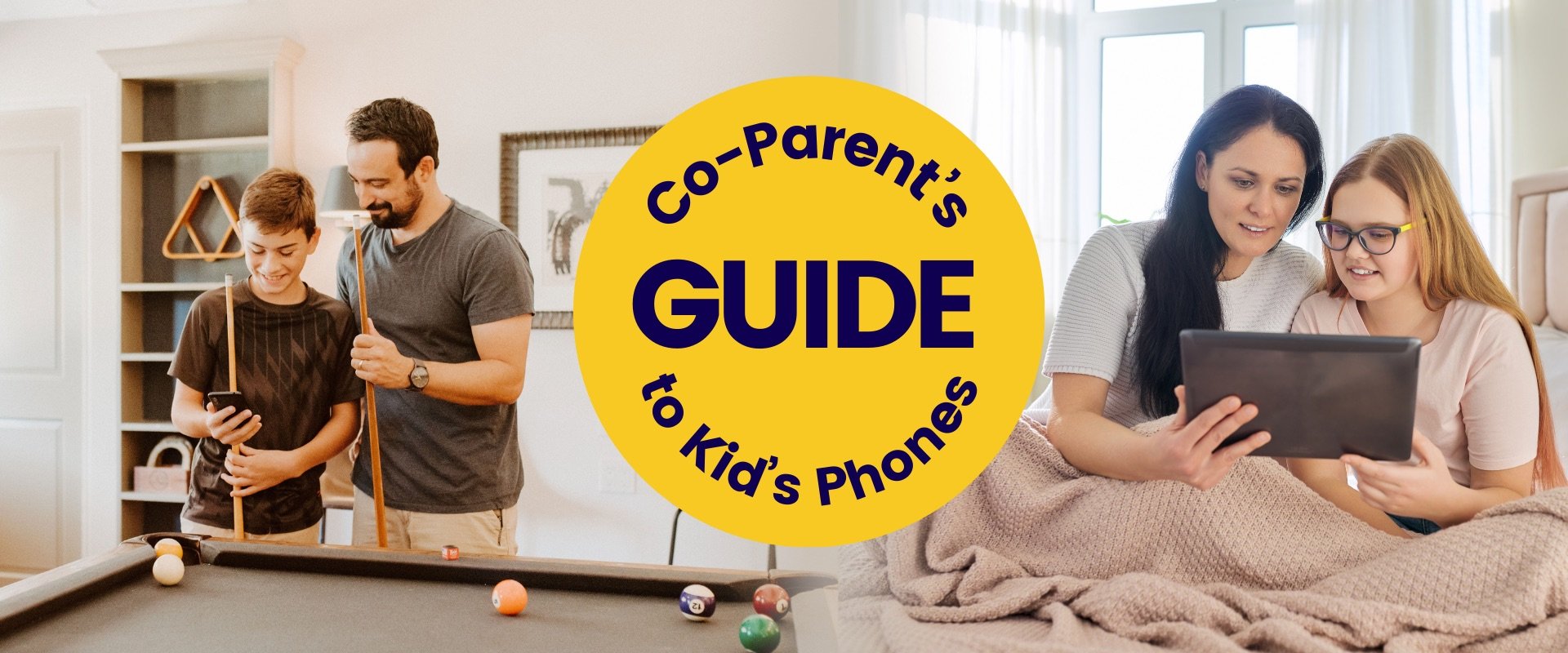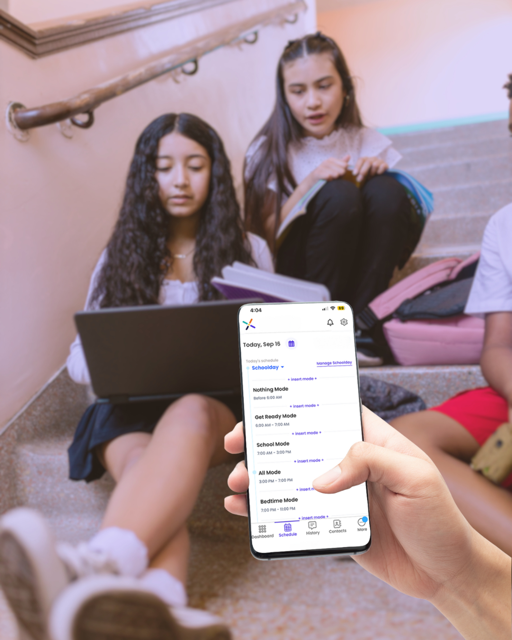
Co-Parent's Guide to Kid's Phones
Navigating your child's first phone when parents don't live together can feel overwhelming—you're already managing so much.
This guide offers practical tips and strategies to help you and your co-parent work together to keep your child safe, connected, and thriving in the digital world.
What to look for in a kid's phone
When choosing a phone for your child, prioritize features that support healthy co-parenting rather than create more conflict. The right device can actually make your life easier and help both parents stay connected with your child.

Both Parents Can Manage the Phone
Look for platforms that allow multiple parent accounts with customizable permissions. You shouldn't have to choose between giving your ex complete control or no control at all. The best systems let the primary parent (typically whoever pays for the phone) grant specific access levels—like approving contacts but not reading texts, or setting bedtime schedules but not tracking location.
Quick Resolution of Safety Concerns
Choose a phone with monitoring capabilities that both parents can access when needed. If something concerning comes up in your child's communications, both parents should be able to see what happened and address it together, even if you don't live in the same house.
Flexible Location Features
GPS tracking can be a blessing or a source of tension between co-parents. Look for systems that let you toggle location sharing on and off, or restrict access during the other parent's custody time. Some families find it helpful for safety; others prefer privacy during their parenting time.
Things to Discuss Before Getting a Phone
Open communication between parents prevents kids from playing you against each other and creates consistency in your child's digital experience.

Start with Your Goals and Concerns
Why Are You Getting a Phone?
Be honest about your motivations. Is it for safety and communication? Keeping up with friends? Preparing for more independence? When both parents understand the purpose, you can work together toward shared goals rather than against each other.
Share Your Biggest Worries
Maybe you're concerned about cyberbullying, inappropriate content, or your child becoming addicted to their device. Your ex might worry about different things entirely. Discussing these concerns upfront helps you create rules that address both parents' priorities.
Establish House Rules (Or Universal Rules)
Decide on Your Approach
Some co-parents work best with consistent rules across both houses—same bedtime, same apps, same consequences. Others prefer "house rules" where each parent makes decisions during their custody time. There's no right answer, but you need to agree on your approach before problems arise.
Key Areas to Cover:
- Screen time limits and bedtime phone rules
- Which apps and contacts are approved and which are concerning
- Consequences for misuse
- Who monitors what (texts, calls, location), or both monitor
- How to handle requests for new apps or contacts
Plan for Consequences
Agree on Discipline Strategies
What happens when your child breaks the phone rules? Will consequences apply at both houses or just where the infraction occurred? How will you communicate about issues that arise? Having a plan prevents your child from thinking they can escape consequences by going to the other parent's house.
Keep Communication Transparent
If your child asks you to change a phone setting, let your co-parent know—even if you disagree with their rules. This isn't about control; it's about preventing your child from learning to manipulate the situation. Most kids will test boundaries, and presenting a united front keeps them secure.
Tips for Digital Co-Parenting Success

Focus on Your Child's Wellbeing
Remember that technology should strengthen your child's relationships, not damage them. When conflicts arise (and they will), ask yourself: "What's best for my child's safety, growth, and sense of security?" This mindset helps you work together rather than against each other.
Communicate About Changes
Technology evolves quickly, and so do kids. Regular check-ins with your co-parent about how the phone is working can help you adjust rules as your child matures. These don't have to be long conversations—even a quick text saying "Emma asked about TikTok, what are your thoughts?" shows respect for your co-parenting relationship.
Stay Flexible
What works at age 10 might not work at age 13. The phone rules that seemed perfect in the beginning will need adjustment as your child proves they're responsible or struggles with certain apps. Being willing to adapt shows your child that you're paying attention to their growth.
You're Not Alone in This
The statistics can feel overwhelming. Approximately 40% of children in the U.S. experience parental divorce by the age of 18, and research shows that children of divorced parents are at higher risk for anxiety, depression, and other adjustment problems. Add smartphones to the mix, and recent studies suggest that smartphone use before age 13 is associated with lower mental health and well-being.
You're already working hard to give your child stability and love across two homes. Choosing a phone with co-parenting features designed specifically for families like yours is one more way to beat the odds and help your child thrive. By working together on digital boundaries, you're teaching your child that even though their parents don't live together, they can still count on both of you to keep them safe and help them grow.
You've got this—and you don't have to do it alone. Pinwheel is here to help!